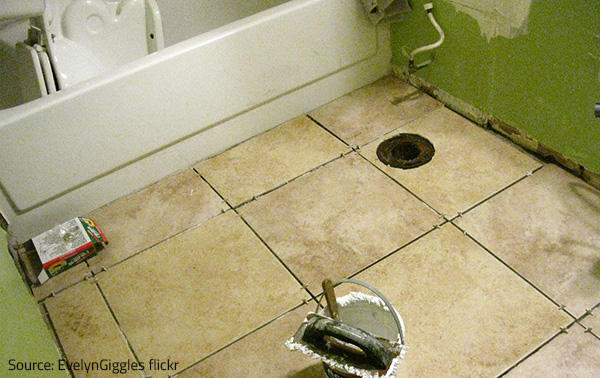Exactly How to Prevent Bathroom Water Damage
Exactly How to Prevent Bathroom Water Damage
Blog Article
What are your concepts about How to Fix a Water Damage Bathroom?

The washroom is incredibly prone for wet accumulation as well as possible water damage because of the constant use of water in it. This post supplies simple assessment strategies to help discovering water damages hazards.
The frequent use water in the washroom makes it extremely susceptible for damp buildup and also potential water damage. By checking it consistently, you can reduce water related damages.
The adhering to collection of examinations is easy to do and also need to be done once in every three months in order to keep your restroom healthy and also to stop possible water problems brought on by the bathtub, the shower, pipe joints and plumbing, sinks, cabinets, and the bathroom
Do not disregard doing these assessments and also be detailed while executing them. Keep in mind that these basic assessments can conserve you a great deal of cash by giving very early indicators for water damages
Sinks as well as Cabinets
Sinks as well as cupboards are subjected to dampness and also humidity day-to-day and also are usually forgotten. Evaluate consistently under the sink as well as on the kitchen counter over it. Fix any drip in the catch as it might recommend drainpipe issues. Take a look around the sink, slow draining pipelines might suggest a blocked drain. Replace sink seals if they are cracked or loosened.
Tub as well as Shower
The shower as well as bathtub require unique interest and maintenance. Examine the floor tiles as well as replace if fractured. See to it that there is no missing out on grout in between the floor tiles. Check as well as replace fractured caulking at joints where the wall surfaces satisfy the flooring or the bath tub. Blocked drains and also pipes problems will certainly avoid the bathtub from drying out as well as may show severe issues under the tub. Consult with a specialist quickly to avoid structural damage. Take notice of stainings or soft areas around the bath tub walls as they may suggest an internal leakage.
Plumbing
Signs for water damages are hard to find because most pipes are mounted inside the walls.
Pay special interest to floor covering as well as wall surfaces wetness and spots as they may show an unnoticeable plumbing trouble. Check wetness levels in adjacent rooms too.
The Bathroom
The commode is a prone water junction. Inspect the water lines and search for leakages around the toilet seat, in the tube, and under the water storage tank. If you detect any type of indicators of dampness on the floor around the bathroom, look for leaks in the toilet edge and storage tank seals.
Realize that hanging toilet dish antiperspirants enhances the opportunities for clogs.
Water Damage Signs In The Bathroom To Avoid Cleanup
Musty smell
This is one of the easiest signs to catch because musty smells are so odorous. The damp, earthy, moldy smell should be a big red flag. The smell will develop when moisture gets trapped in surfaces, and begins to facilitate mold growth. Leaking pipes under cabinets, inside walls, and behind shower fixtures will cause moisture to stay trapped and not dry, which will lead to mold growth and spread. As soon as you notice any musty smells in your bathroom, have it checked for hidden water damage and cleanup signs.
Visible mold
If the smell isn’t there to give it away, sometimes you will actually see mold growth. Finding mold in your bathroom is a serious problem, because mold is very harmful to your health. By the time mold growth is visible, it also means that water damage has already occurred and been present for some time. The only way the mold problem can be resolved is to find the source of the moisture and get it stopped. To safely and adequately remove mold, you need to have professionals handle the remediation. Do not waste any time in getting mold problems addressed, fixed, and sanitized so that you can protect you and your family from the many respiratory symptoms caused by mold exposure.
Damaged floors
Bathroom floors should be able to withstand some exposure to water while still remaining in good condition. However, when excess exposure or water leaks occur, they will begin to damage even the most water-resistant flooring. If you notice any cracking, bubbling, staining, or warping on your bathroom floors, there is probably a water leak somewhere causing the distortion. If you notice areas of the floor have become softer, or even have a spongy feeling, there is probably damage to the subfloor. Subflooring is typically made up of plywood. When plywood is exposed to water or moisture, it will absorb it. Once it has become saturated, the weight of the excess water will cause the wood to swell and soften. Check the floors in your bathroom frequently to catch any of these sings before they lead to damaged subflooring.
Changes on walls
When water leaks behind walls, it will cause changes in the drywall. Peeling plaster, blistering paint, and soggy wallpaper are all good indicators that excess water is building up behind the wall. Water leaking behind drywall will cause it to swell and be soft to the tough. If you start to notice gaps along the trim of your walls, or where tile meets the wall, it could also be a strong indicator that there is a leak behind the wall. Any changes, distortion, or damage on the walls should be evaluated as soon as you notice it to prevent further water damage and cleanup.

I ran across that post on Common Causes of Water Damage in a Bathroom when doing a lookup on the internet. Enjoyed reading our write up? Please share it. Let somebody else find it. Thanks a lot for going through it.
Explore Now Report this page